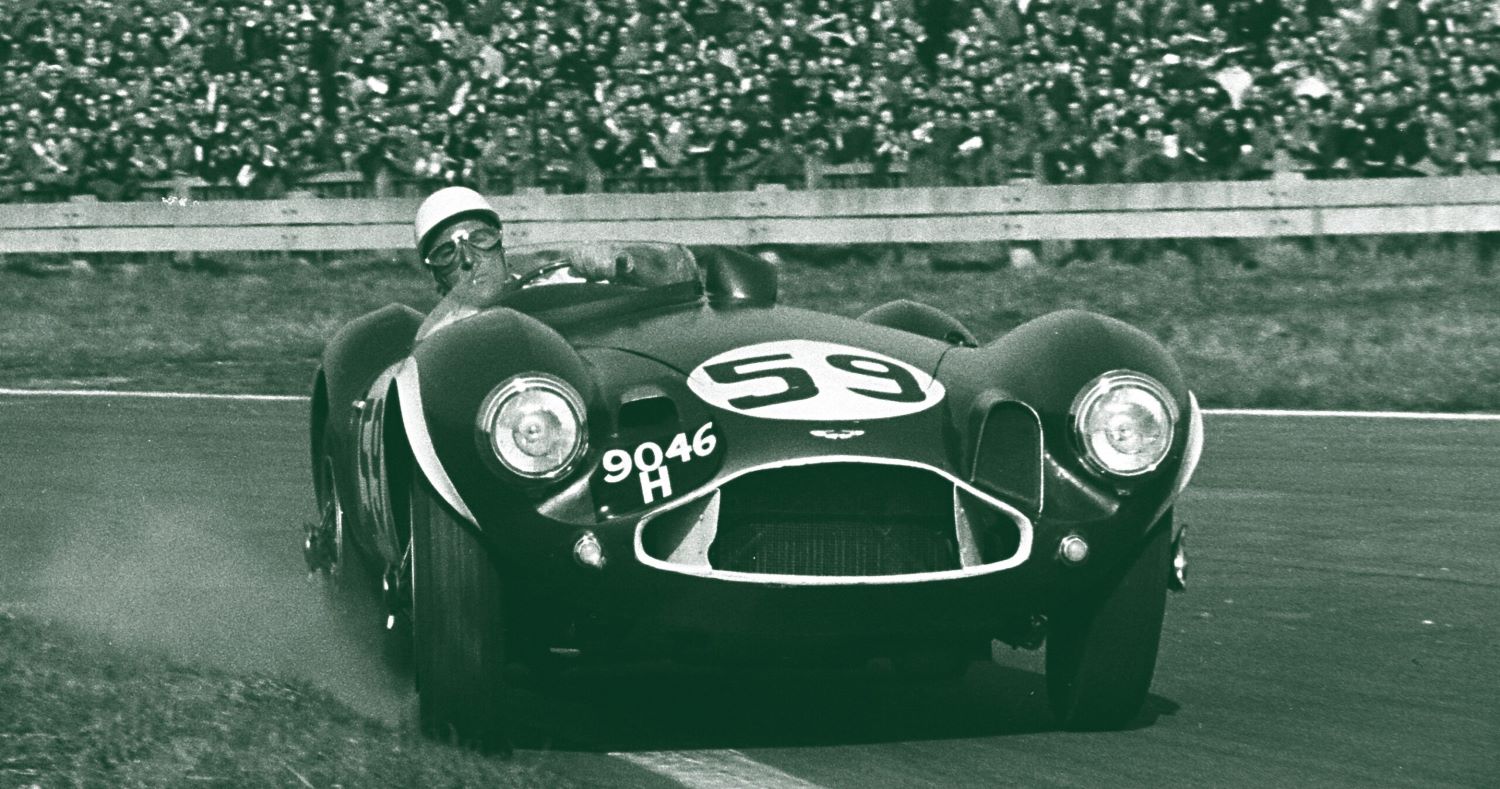
1953 Aston Martin DB3S
The Aston Martin DB3S was a sports racing car built as a replacement for the heavy and uncompetitive DB3. In total 31 cars were made, with 11 works cars and 20 cars being sold for customer use. The DB3S was introduced in 1953 and it proved somewhat more successful than the Aston Martin DB3. The DB3S was later replaced in 1956 by the DBR1
The 11 works cars had chassis numbers from DB3S/1 to DB3S/11, with the 11th works car never being raced. The 20 custmer cars had three digit chassis numbers, from DB3S/101 to DB3S/120.
Originally two works DB3S fixed head coupé’s were made. The change was to make them more aerodynamic than the open top bodied cars. However they were unstable at high speeds and both crashed at the 1954 24 Hours of Le Mans. Both coupé’s were then rebuilt as open bodied cars. Three of the customer cars were also fitted with similar coupé bodies.
- Debut: 1953 24 Hours of Le Mans
- Constructor: Aston Martin Lagonda LTD
- Designer: Willie Watson, Frank Feely (Body).
- Chassis: Twin-tubular, space frame design, aluminium body, open two seater.
- Suspension:
– (front) Torsion bar and trailing arms Suspension
– (rear) Torsion bars, trailing arms, De Dion tube and central slide - Length: 12 ft 10 in (3,910mm)
- Width: 4 ft 11 in (1,500mm)
- Height: 3 ft 5 in (1,040 mm)
- Axle track: 4 ft 1 in
- Wheelbase: 7 ft 3 in (2,210 mm)
- Engine:
– Lagonda 2,992 cc Straight six, Twin OHC, (later a twin-plug head),
– FR Layout, 3 twin-choke Weber 35 DCO carburettors - Transmission: David Brown S430, 4-speed Manual, 9″ single clutch
- Weight: 1,850 lb (840 kg) dry 1,940 lb (880 kg)
- Tyres: 16 x 6
- Notable drivers: Tony Brooks, Reg Parnell, Roy Salvadori, Noël Cunningham-Reid, Carroll Shelby, Stirling Moss.

The DB3S, introduced in 1953, established Aston Martin as a serious Le Mans contender, racing for outright wins. Frank Feeley’s alloy DB3S body looked much better than the boxy DB3 and was more aerodynamically efficient, if not always very stable at Mulsanne speeds. The DB3S was also lighter, its revised 3-litre straight-six was more powerful and Willie Watson’s new chassis clearly had more potential all round.
Five open examples were built in 1953. Numbers six and seven, in 1954, had coupe bodies, chasing Le Mans straight-line speed, but making these cars over-sensitive to cross winds and difficult to drive. But there would be several other body variations, including an aerodynamic head fairing for this car, DB3S/9.
They built eleven team cars in total, plus customer cars from 1954. Three team cars raced in 1953 but none finished the first 100mph 24 Hours; all five team cars failed to finish in 1954. The single survivor of four took second overall in 1955 Peter Collins and Paul Frère; and Collins with Stirling Moss took second again in 1956 in this car, while the other 1956 car was yet another DNF. A single private entry took 11th in 1957 and the DB3S’s final Le Mans appearance in 1958 netted another second overall for Peter and Graham Whitehead.

You must be logged in to post a comment.